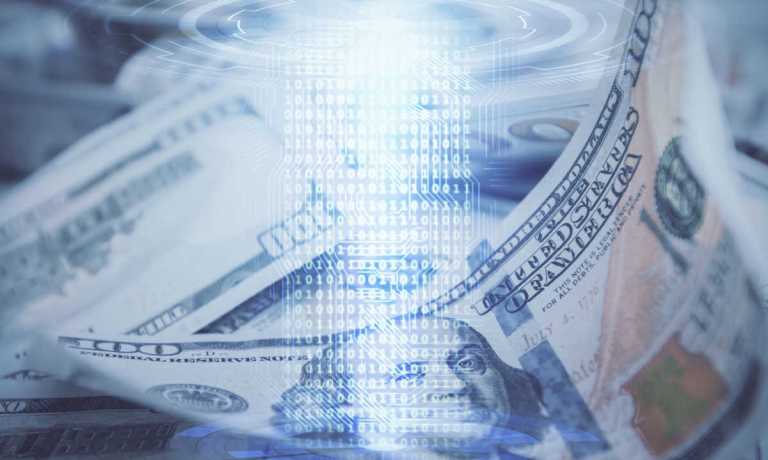3 Reasons a Digital Dollar Is Still a Long Way Off

It probably isn’t a coincidence that Bank of America’s cryptocurrency team stomped on the brakes regarding its prediction of a digital dollar as soon as 2025 right after the White House released a report on the technical challenges of a U.S. digital dollar.
The Bank of America cryptocurrency team analysts, Alkesh Shah and Andrew Moss, virtually parroted Fed Chairman Jerome Powell in a Friday (Sept. 23) report admitting that their January report calling a digital dollar “inevitable” was “too optimistic” — saying, according to Bloomberg, that their “view is that it’s better to be right than first when it comes to CBDC issuance.”
It’s a sign of a growing recognition that the Federal Reserve was right in its earliest assessments of the difficulties of designing and building a central bank digital currency (CBDC) that go far beyond whether it will run on a digital ledger like those that blockchains, cryptocurrencies and especially stablecoins are built or some other technology.
There are a lot of reasons it will take so long to rewire the U.S. financial system — the 58-page “Technical Evaluation for a U.S. Central Bank Digital Currency System” that the White House Office of Science and Technology Policy released on Sept. 16 listed several dozen — and it amounts to little more than a bare-bones outline of the major questions to be researched and answered. The policy objectives section alone has 17 parts.
Here are three of the biggest.
Fear Itself
There’s a reality that the debate is increasingly being pushed not by the benefits of a central bank digital currency but by fear of not having one.
Where Shah and Moss didn’t change their perspective was in saying that allowing the Chinese digital yuan, or e-CNY, and the likely-but-not-inevitable digital euro to get too long a lead would “potentially pressure the dollar’s status as the world’s reserve currency.”
That’s been a fixture of political discussions about building a digital dollar both in Congress and from the White House, as well by analysts like Shah and Moss. And it’s rooted in three fears: The first is the overblown fear that stablecoins will take over from fiat currency, which is blind to the reality that, one, they are barely being used other than as a lubricant for crypto trading, and two, they can be very easily banned — notice that India and China, with a third of the world’s population, have already done so, and the EU very clearly threatened to when then-Facebook launched its Libra/Diem stablecoin.
The second is that that foreign CBDCs will threaten the dollar’s position as the world’s reserve currency. Which ignores that the reasons it still holds that position has a lot to do with things like the depth and liquidity of U.S. markets and strong rule of law than inertia. The threat simply isn’t that immediate.
The third is that many of the questions that skeptics have raised about the project are so serious. Fears that the Federal Reserve would take on individual deposit accounts are frankly silly. Aside from the economic destruction it would cause to the banking system and through that to the economy, the Fed would have to expand its size and scope so vastly that it simply could not cope — Jerome Powell doesn’t want to be taking customer service calls from your grandmother about her savings account.
Let Others Fail First
Questions beginning with the impact a digital dollar would have on the banking system — which banks have been screaming approaches Armageddon — would be difficult to game out without looking at the real-life experience of other CBDCs.
See also: Bank Battle Looms if Treasury Throws Weight Behind Digital Dollar
But that doesn’t factor in that allowing others a fair lead would also allow the U.S. to see and learn from whatever inevitable design flaws and unintended consequences come to light when the rubber hits the road.
What seems far more likely is that the Fed and other policy makers would want to see what happens to other CBDC projects — particularly ones moving at breakneck speed in economies like India and Russia, to say nothing of what a CBDC would do in a larger, more advanced EU, which seems to have far more support in the European Central Bank (ECB), European Parliament and European capitals than a digital dollar does here.
Too Important to Fail
What Shah and Moss’ report for Bank of America does do is show that even the most enthusiastic digital dollar supporters are recognizing that it’s a far, far bigger idea than much of the public commentary has suggested, and that if the world’s reserve currency gets it wrong, the disaster would spread far beyond U.S. shores.
Realistically, there isn’t much risk of hacks that steal billions of digital dollars or issue new ones like some of the recent attacks on decentralized finance (DeFi) projects. Like the USDC and USDT stablecoins issued by Circle and Tether, respectively, digital dollars could easily be frozen, almost instantly. However, even without damage, they would cause serious concerns and doubts about the security of the U.S. CBDC that could the public’s damage trust in it — and possibly confidence in the dollar broadly. And cybersecurity attacks that interrupt such a system, or that cause information breaches could have a staggering impact.
All in all, it’s a recognition that the Fed’s comments that a digital dollar is at least a decade off should probably focus on the reality that in government, the “at least” estimate virtually never comes to pass.
And unspoken and possibly unconsidered, the likelihood of India and Russia successfully rushing out CBDCs in two years, or the EU in five, is slim.